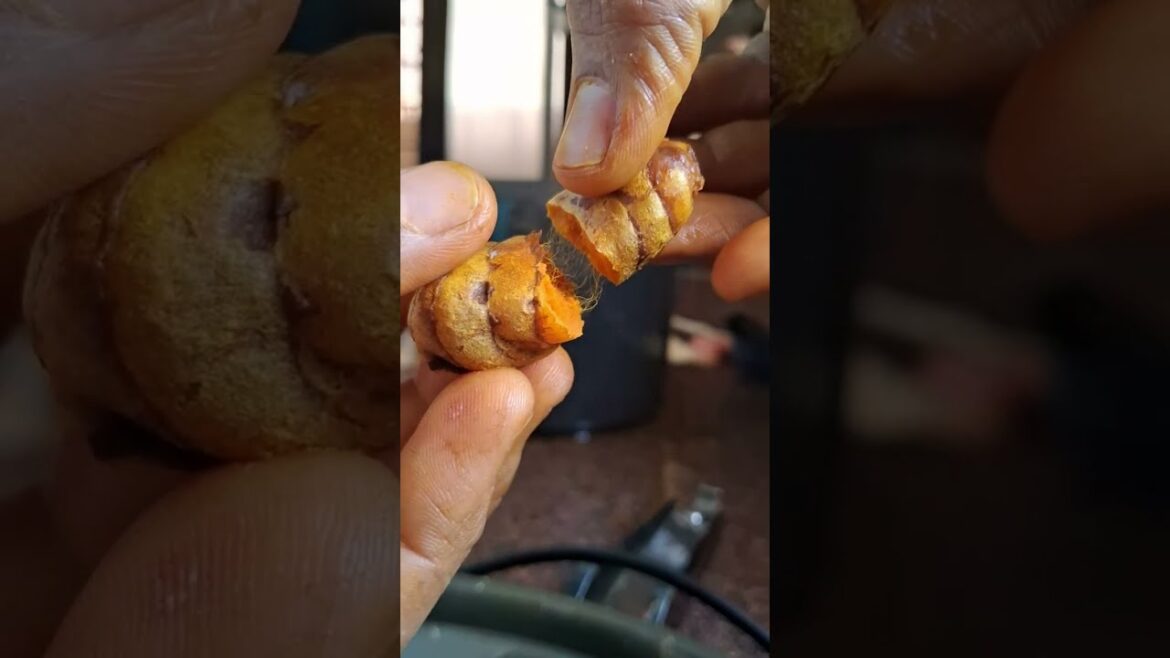#cookingathome #celebritychef #cheflife #chef #cookingram #cooking #cookingshow #cook #cookingclass Turmeric is one of the key ingredients in many Asian dishes, imparting a mustard-like, earthy aroma and pungent, slightly bitter flavor to foods.It is used mostly in savory dishes, but also is used in some sweet dishes, such as the cake sfouf. In India, turmeric leaf is used to prepare special sweet dishes, patoleo, by layering rice flour and coconut-jaggery mixture on the leaf, then closing and steaming it in a special utensilMost turmeric is used in the form of rhizome powder to impart a golden yellow color. It is used in many products such as canned beverages, baked products, dairy products, ice cream, yogurt, yellow cakes, orange juice, biscuits, popcorn, cereals and sauces. It is a principal ingredient in curry powdersAlthough typically used in its dried, powdered form, turmeric also is used fresh, like ginger.
Turmeric is used widely as a spice in South Asian and Middle Eastern cooking. Various Iranian khoresh recipes begin with onions caramelized in oil and turmeric. The Moroccan spice mix ras el hanout typically includes turmeric. In South Africa, turmeric is used to give boiled white rice a golden color, known as geelrys (yellow rice) traditionally served with bobotie. In Vietnamese cuisine, turmeric powder is used to color and enhance the flavors of certain dishes, such as bánh xèo, bánh khọt, and mì Quảng. The staple Cambodian curry paste, kroeung, used in many dishes, including fish amok, typically contains fresh turmeric. In Indonesia, turmeric leaves are used for Minang or Padang curry base of Sumatra, such as rendang, sate padang, and many other varieties. In the Philippines, turmeric is used in the preparation and cooking of kuning, satti, and some variants of adobo. In Thailand, fresh turmeric rhizomes are used widely in many dishes, in particular in the southern Thai cuisine, such as yellow curry and turmeric soup. Turmeric is used in a hot drink called “turmeric latte” or “golden milk” that is made with milk, frequently coconut milk. The turmeric milk drink known as haldī dūdh (haldī [हलदी] means turmeric in Hindi) is a traditional Indian recipe. the drink known as “golden milk” uses nondairy milk and sweetener, and sometimes black pepper after the traditional recipe (which may also use ghee).
Turmeric is approved for use as a food color, he oleoresin is used for oil-containing products.
In combination with annatto , turmeric has been used to color numerous food products.[6][29] Turmeric is used to give a yellow color to some prepared mustards, canned chicken broths, and other foods—often as a much cheaper replacement for saffron.Turmeric and curcumin have been studied in numerous clinical trials for various human diseases and conditions, with no high-quality evidence of any anti-disease effect or health benefit.There is no scientific evidence that curcumin reduces There is weak evidence that turmeric extracts may be beneficial for relieving symptoms of knee osteoarthritis, as well as for reducing pain and muscle damage following physical exercise.There is good evidence that turmeric is an allergen.Spinach is rich in iron, vitamin C and E, potassium, and magnesium. As part of a nutritious diet, it can help support immune function, aid the digestive system, may even have anticancer properties. However, certain individuals may need to eat this vegetable in moderation.This is because turmeric has antiseptic properties that are known to cure both internal and external wounds. The antiseptic turmeric benefits also help in stopping the blood from oozing out of the injury and any furtherBecause of the laxative effect of ambe halad, it’s a perfect superfood to treat constipation. Any kind of pain or inflammation in our body is uncomfortable, isn’t it? Be it post workout, menstrual pain or chronic inflammation! Ambe Halad helps in reducing the inflam


2 Comments
😊nice
❤